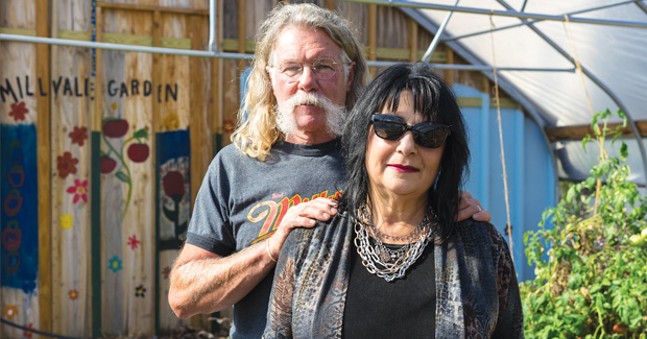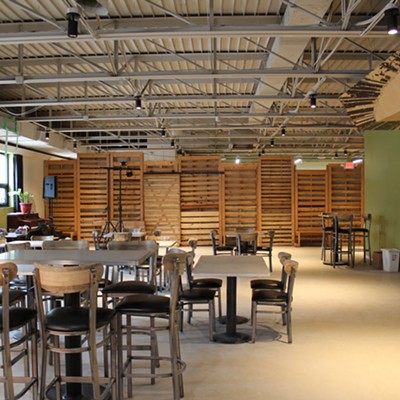In 2007, Millvale was hit by a disastrous flood. Girty’s Run, the creek that runs through the borough, swelled to mammoth proportions and engulfed the town’s main drag, Grant Avenue, and most of the business district. Millvale, like many small towns along one of Pittsburgh’s three rivers, had been declining for decades and the flooding harshly punctuated the town’s struggles.
“After the flood, residents had two choices,” says Scott Wolovich of New Sun Rising, a social-enterprise incubator that has been working in Millvale for years. “You either fold up your tent and go home, or you roll up your sleeves and see what you are made of. Folks here were not going to fold up the tent and go home.”
Dozens of community members volunteered to clean up after the flood, and Wolovich says that during the clean-up, residents realized their borough could use some more community spaces. Residents started setting goals to start a library, a small park and a community garden.
All of those goals have come to fruition in the past few years. And now, small businesses and millennials are flocking to Millvale, revitalizing the old mill town in an organic, community-led way uncommon among the region’s old industrial boroughs. Millvale is set to extend its bike trail, get a new coffeeshop/farm stand, open a tea shop, and even launch a hotel in the near future. Additional proposals keep flowing in.
Community stakeholders hope that the new jobs that small business brings to the town will help reduce Millvale’s unemployment rate, which is above the Allegheny County average. But Wolovich is confident that the momentum that started when the community came together to clean up after the flood will push Millvale above the troubled waters of the past.
“At that point, it was like a ball rolling down hill,” he says.
And while Millvale started recovering after the flood in 2007, Tina Walker, president of Millvale Community Development Corp., says the borough really started to take off economically over the past two years. She references explosive growth of the Business Association of Millvale, which formed a few years ago with about 10 businesses; now it has 47 members. She also says that young people have not only moved to Millvale in recent years, but are also getting involved in the community.
“We have all these amenities here; it is what everyone wants,” says Walker. “Now, the youth want in, and they want to participate in the growth. They realize this is a part of life that roots them in the community.”
Millvale has a post office, two diners, a music venue, a record shop, a bowling alley, a bakery, pharmacies, a deli, and multiple bars and breweries all located within a square mile. The borough will add a coffee shop, Tazza D’Oro, and a farm stand when the near-complete Bennett Station building is finished at the town’s main intersection of Grant Avenue and North Street.
Census figures show the town’s demographics are shifting, too. Millvale has increased its percentage of millennial residents over the past few years, and has added hundreds of residents with college degrees since 2000. Walker says these new residents are attracted to the borough’s throwback, small-town lifestyle, where they can walk to everything and they know business owners by name.
Walker says this explosion of small-business interest was only possible thanks to the community getting involved in the borough’s future. In 2012, when Walker took over at the MCDC, members held community meetings, formed focus groups and met with residents for a year before drafting a plan for Millvale’s future.
MCDC also established four-year term limits for board members, so no one can completely control Millvale’s development, says Walker.
“It has to come from the inside out,” says Walker. “We need community cooperation from the ground up to do anything. We are very fortunate it is set up that way.”
The MCDC has only one part-time employee and is primarily run by volunteers, like Walker. She says this creates a commitment to the organization that runs deep. “To do this is not just a job, you have to feel it in your heart,” Walker says.
With this mindset and community involvement, Millvale became one of the few communities in Allegheny County to draft an EcoDistrict plan. This plan focuses on sustainable growth and environmentally friendly practices. Walker says it has not only attracted small businesses focused on participating in the community, it also helped Millvale get a grant for a community garden and solar panels on the roof of the community library.


















